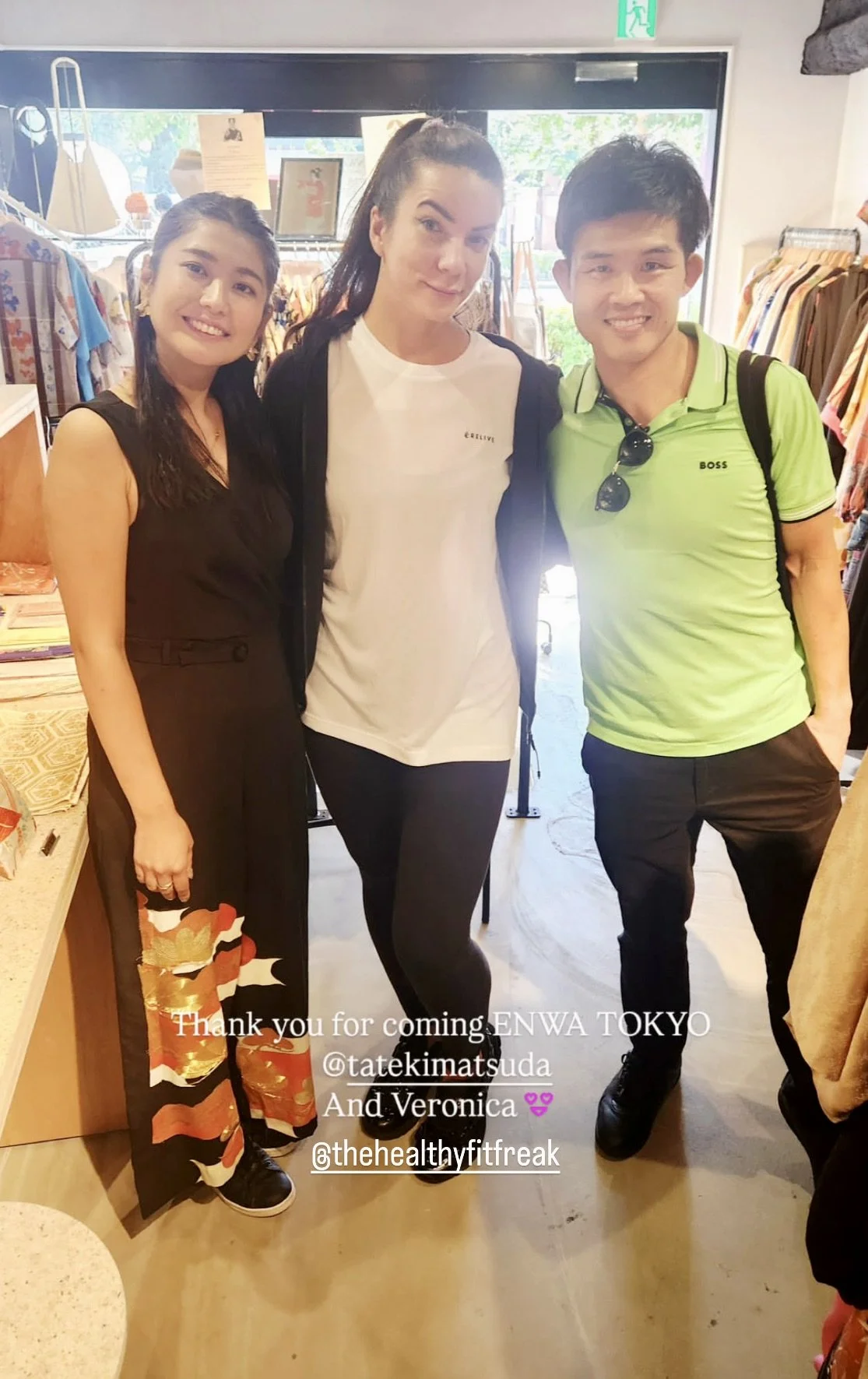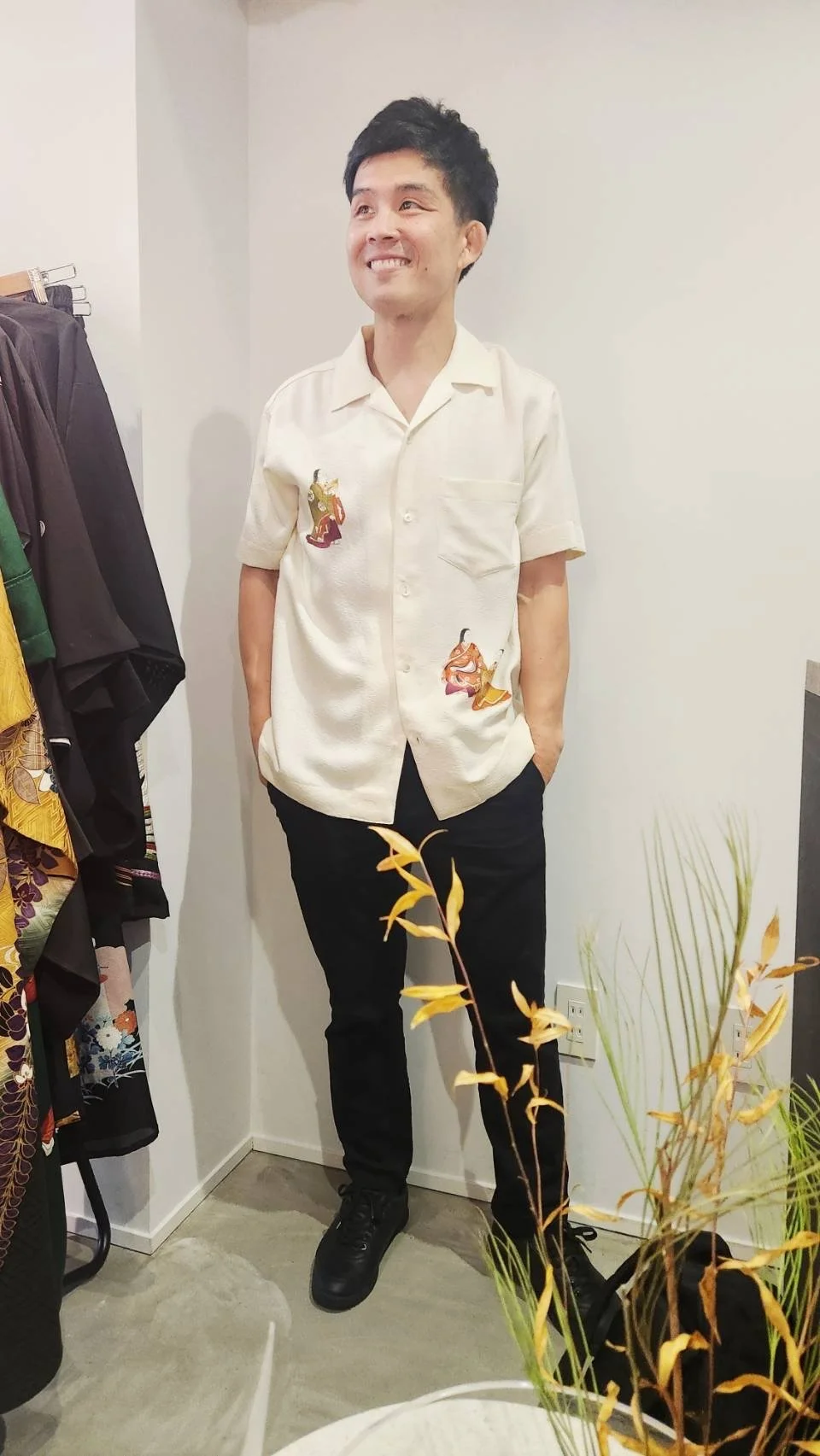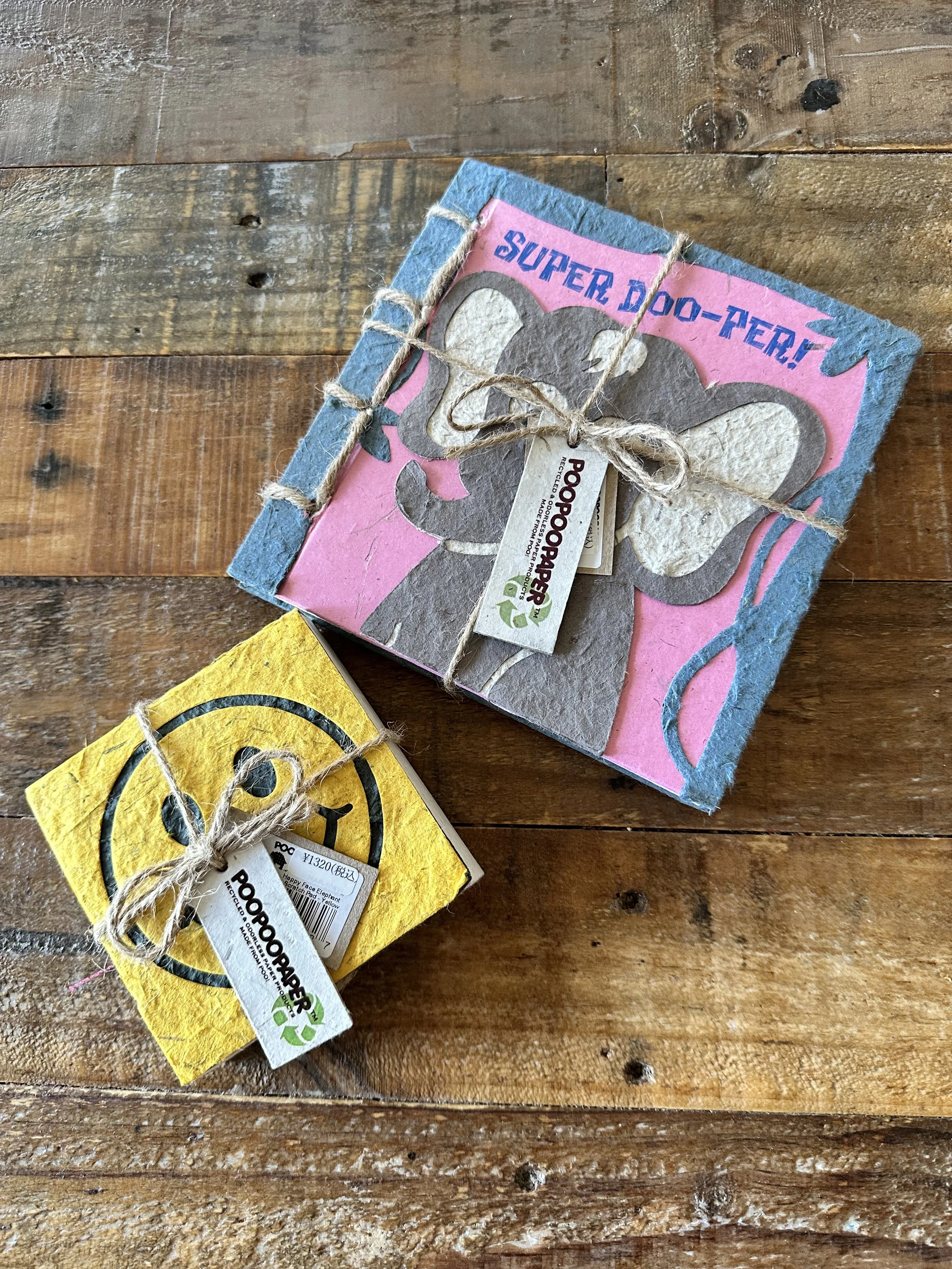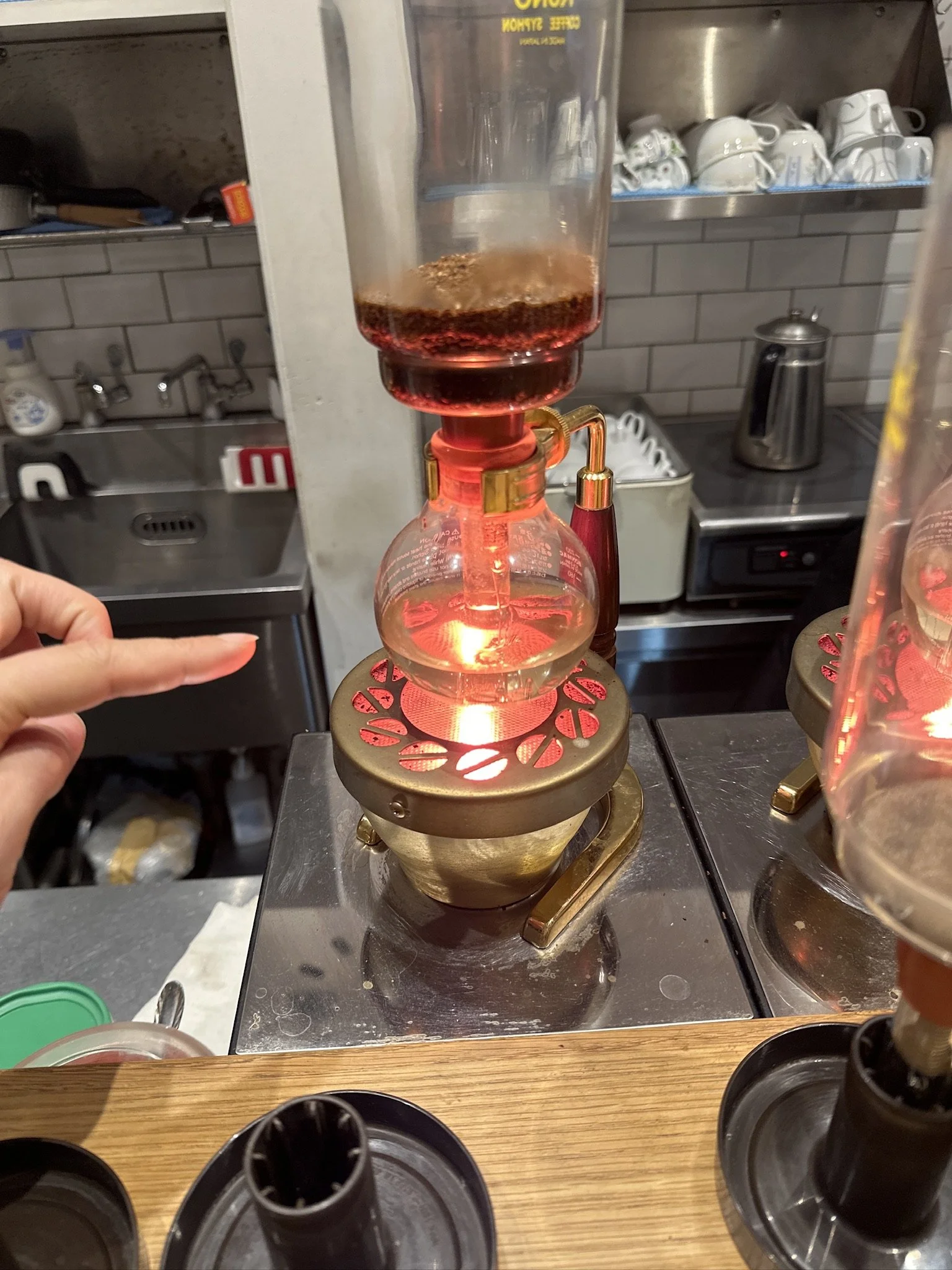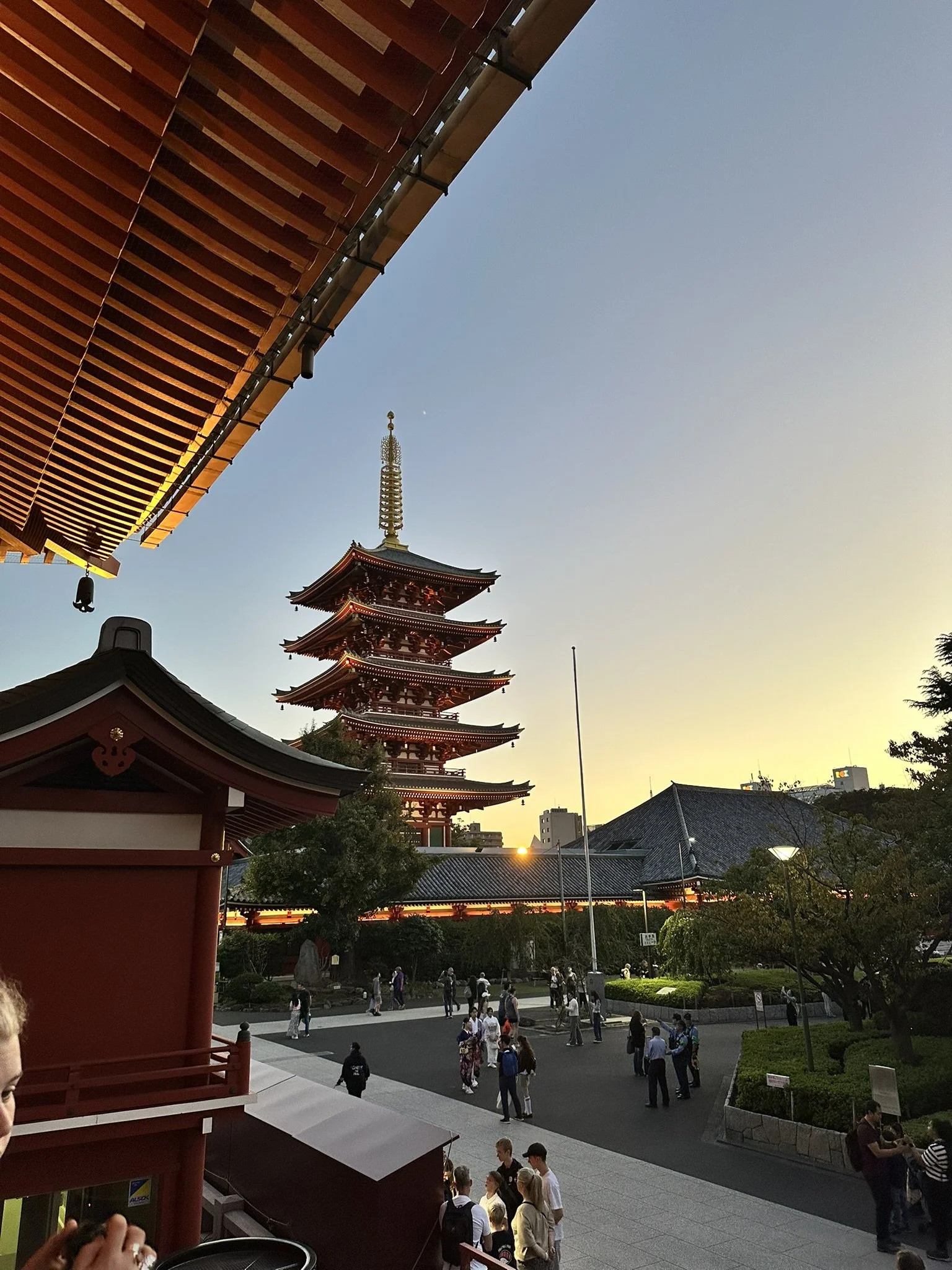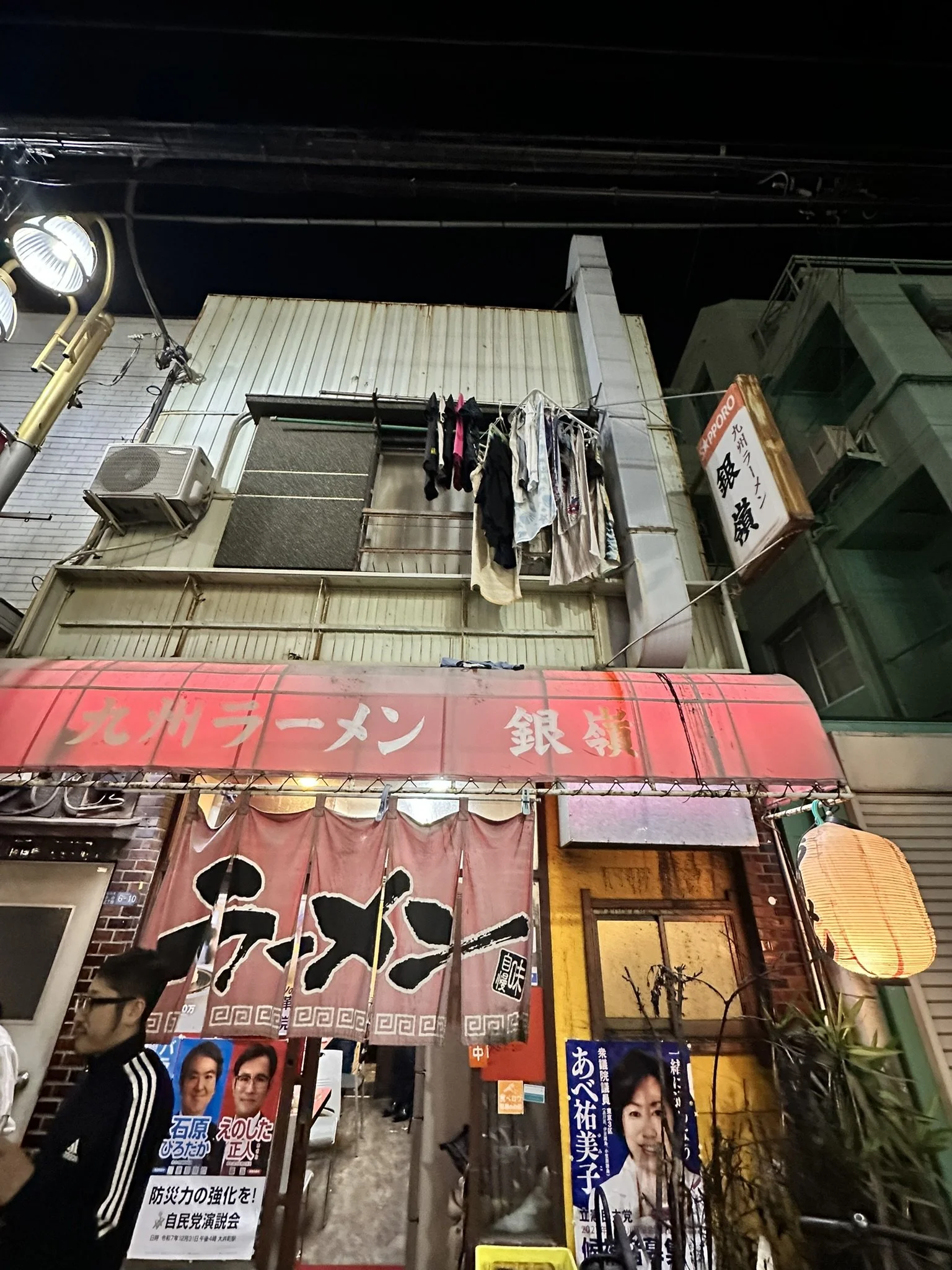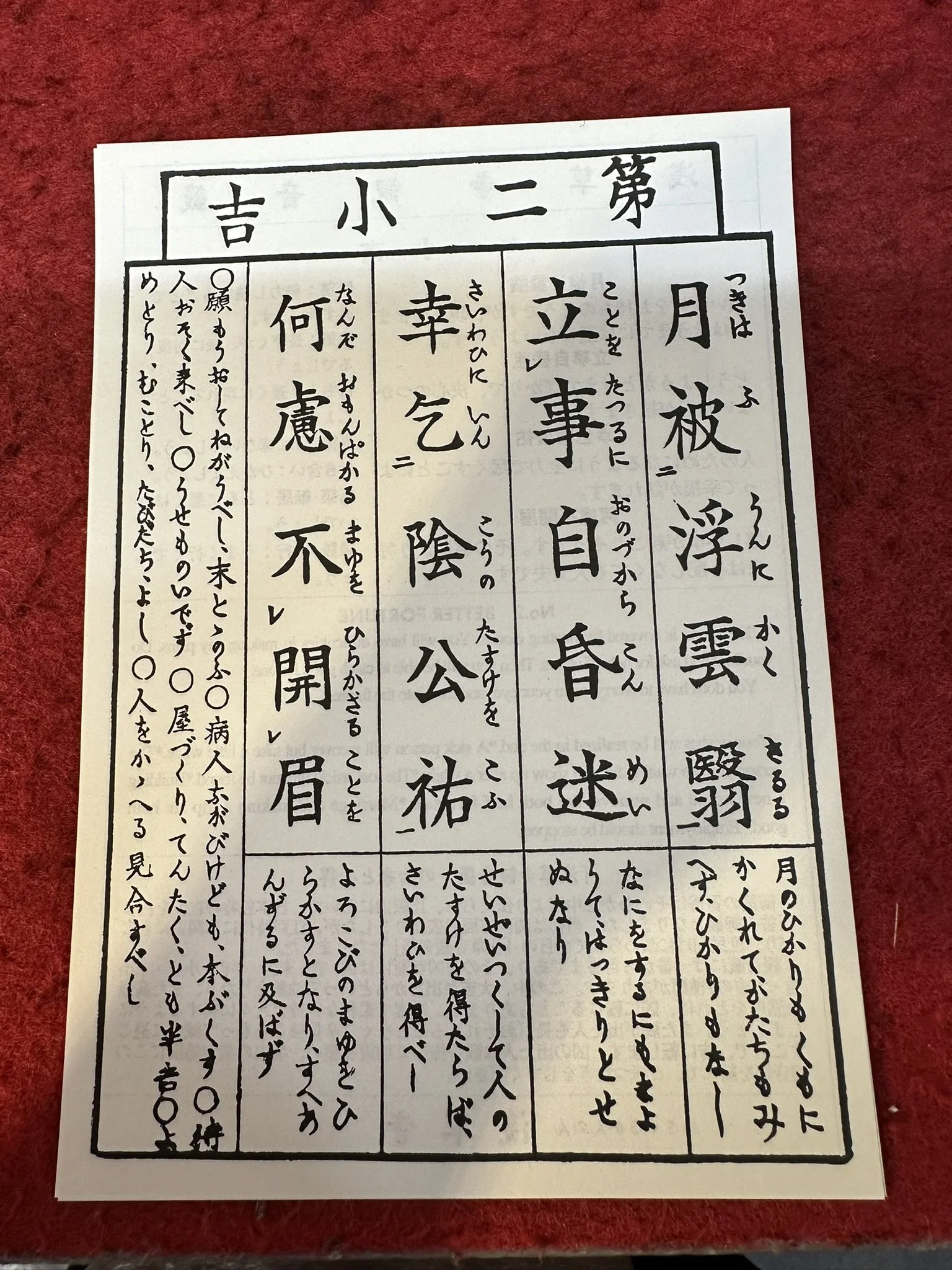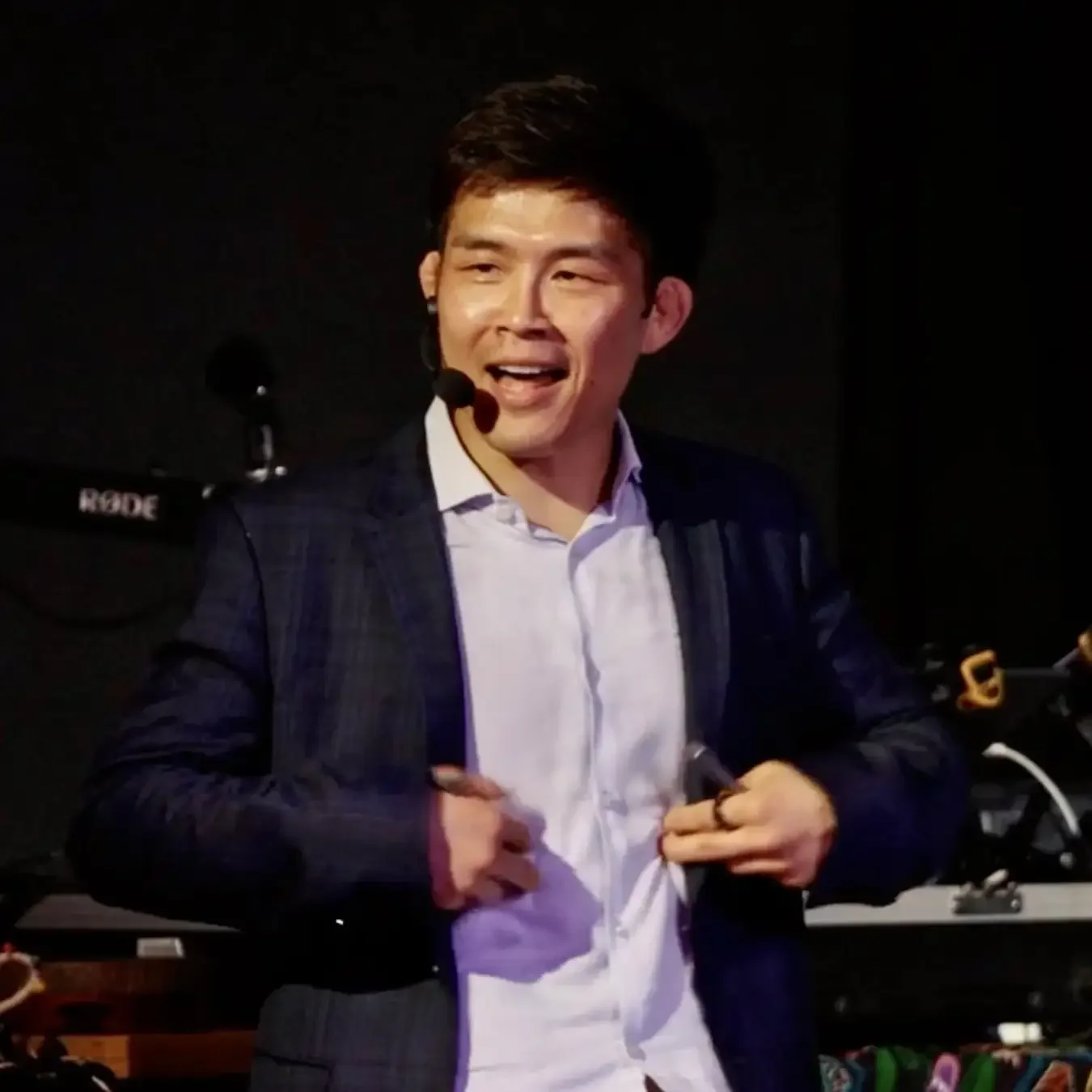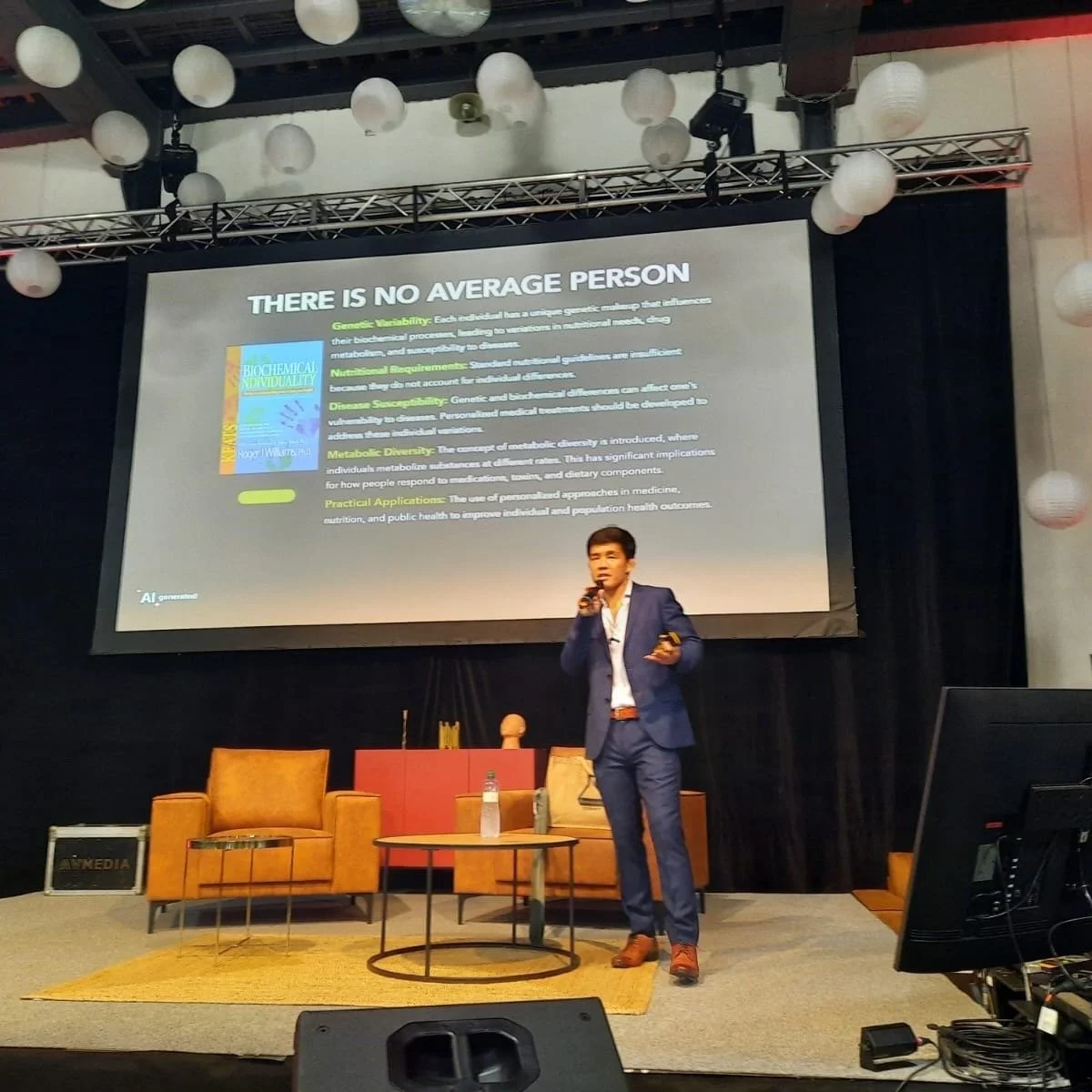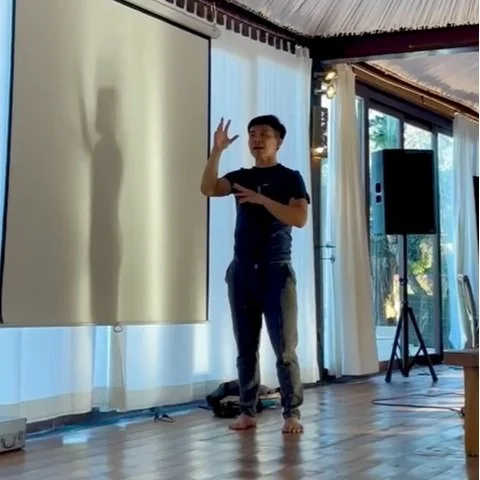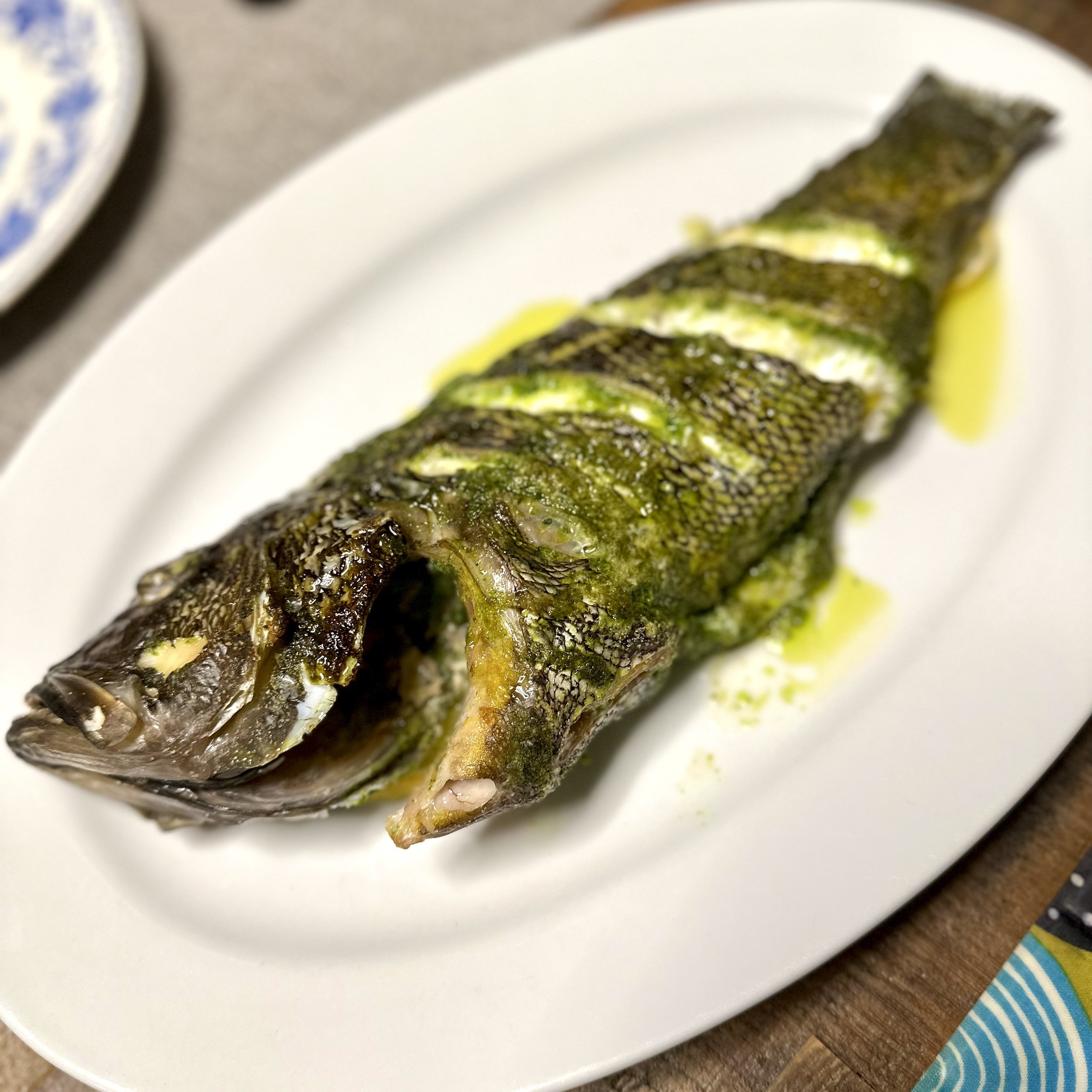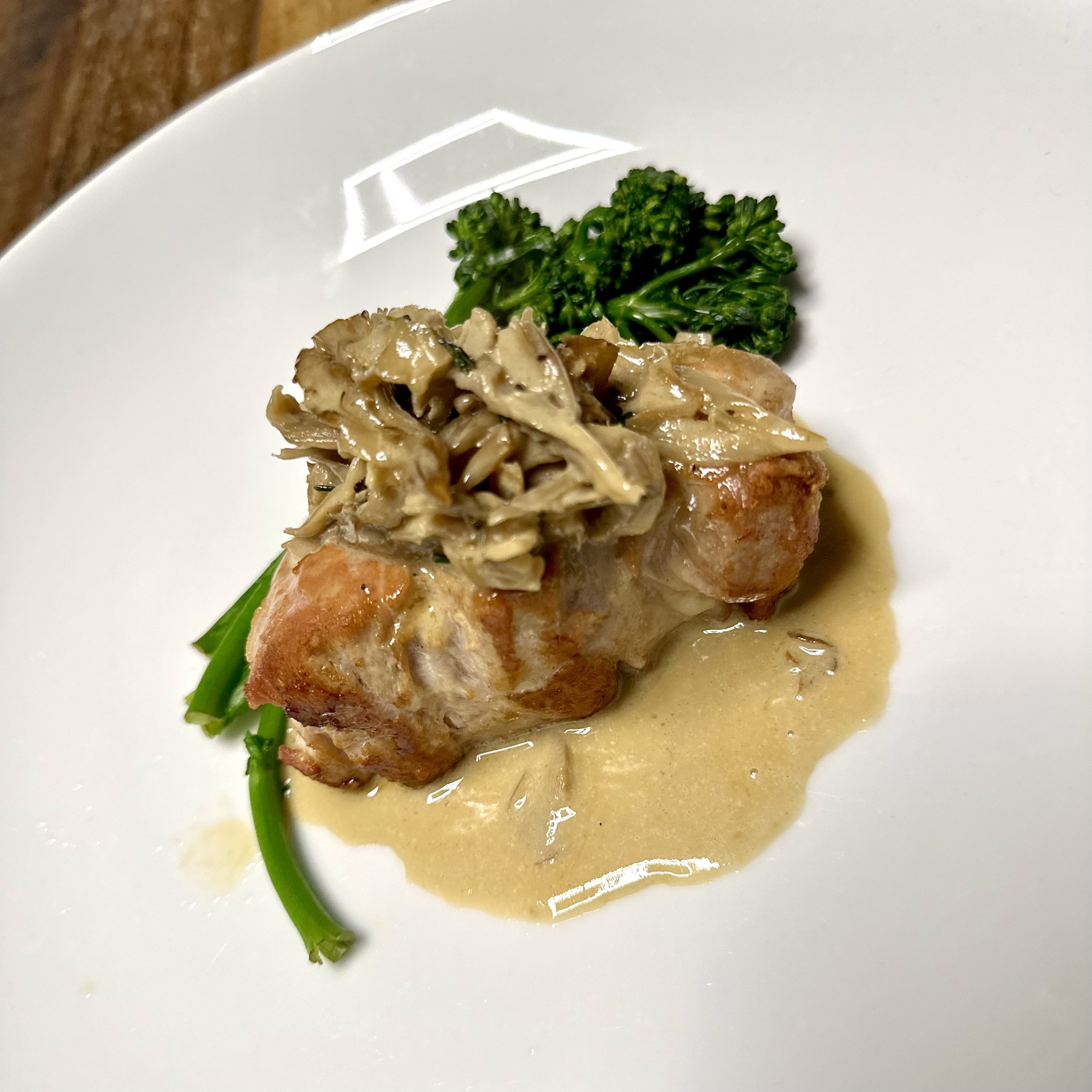From 1000-Year-Old Silk to the Cheapest Ramen in Tokyo - One Perfect Day
From Summit Stage to My Dirty Old Neighborhood Ramen Shop - This is Real Tokyo
Day after HOLOLIFE Summit Tokyo wrapped. Still buzzing from the event. My colleague Veronika from Finland is visiting - her first time in Japan. And I'm thinking: I need to show her the Tokyo everyone should see first. The beautiful traditional one.
Then later? I'm going back to where I actually grew up. Alone. Because some trips you need to take by yourself.
Morning: The Tokyo Everyone Needs to See
First stop - Asakusa. Where all Japan first-timers need to go. Kaminarimon Gate, Sensoji Temple, the whole tourist circuit. But I wasn't taking Veronika to tourist traps. I was taking her to see Nanami.
Nanami is my HOLOLIFE Japan podcast sidekick. Smart, cool, runs this incredible shop in Asakusa called ENWA Tokyo. Not your typical souvenir shop. This place takes old kimono - like, really old, sometimes 100+ years - and remakes them into modern clothing.
We walked up to the storefront. Clean lines, minimal design, that sign: "ENWA TOKYO - 縁和 - KIMONO REMAKE & MADE IN JAPAN COLLECT". Inside, it's like stepping into someone's really stylish living room. Kimono fabrics everywhere, but not in a museum way. In a "you can actually wear this" way.
Nanami greeted us. Big smile. Started showing Veronika different pieces, explaining the history. This isn't just fashion. It's Japanese culture being kept alive by making it useful for today.
The Jūnihitoe Moment
Then I saw it. This cream-colored short sleeve shirt hanging on the rack. But it wasn't just a shirt.
Nanami explained: "This is our S-19 piece. Inspired by jūnihitoe."
Jūnihitoe. The twelve-layered kimono that imperial court ladies wore back in the Heian period. We're talking 1000+ years ago. These weren't just clothes - they were art. Each layer a different color, stacked in specific combinations to represent the seasons, nature, poetry. The whole thing could weigh 20 kilograms. Absolute elegance and status.
This shirt used fabric from one of those ceremonial kimono. You could see it - the way multiple colors were layered in the weave, each shade harmonizing with the next. Like looking at autumn leaves transitioning through different hues. That level of craftsmanship where ancient artisans were thinking about how colors interact, how light hits fabric, how to capture the feeling of seasons changing.
All of that history, all of that imperial court aesthetic - now remade into something I can actually wear to a coffee shop.
That's what ENWA does. They take these elegant fabrics that would otherwise sit in storage, unused because traditional kimono aren't practical for modern life, and transform them. The ancient aesthetic meets modern design. The respect for the past meets the reality of how we live now.
I tried it on.
The fabric felt different from normal clothing. Softer. Way softer. Like, you know how most clothes today feel kind of... industrial? This was the opposite. Delicate but strong. The kind of softness that comes from quality silk that's been around for decades, maybe longer. You could tell immediately this wasn't made in some factory last month.
The cut was modern - comfortable, easy to move in, something I could wear in Tokyo or Boston. But the fabric? Pure old-world craftsmanship.
"I'm getting this," I said.
Veronika laughed. "You look like you just found treasure."
"Kind of did, actually."
Because that's the thing - this isn't fast fashion. This is slow fashion. This is taking something that represented the highest level of Japanese craftsmanship and culture, and saying "this still matters, this is still beautiful, let's make it live again."
The Basement Discovery
"Oh, you have to go downstairs," Nanami said. "Seplumo is down there."
Seplumo. This ethical gallery concept shop in the basement. I went down with Veronika and immediately spotted something that I wanted to buy them for my kids.
Yes. You read that right. Notebooks made from elephant dung. Handmade, eco-friendly, actually beautiful. The packaging said "SUPER DOO-PER!" with an elephant illustration. I grabbed two - one yellow, one pink. For Lumi and Lui. Because only in Japan can you find artisan elephant poop notebooks in the basement of a kimono remake shop in Asakusa.
From imperial court kimono to elephant poop notebooks. That's the range right there.
Coffee Culture Moment
After ENWA, we hit the classic spots. Kaminarimon Gate with the massive lantern. Sensoji Temple - I did the omikuji (fortune telling). Drew my fortune slip. It basically said "ok." Not great, not bad. Just ok. Very Japanese. Very appropriate for the day.
Veronika was absorbing everything. Taking photos, asking questions. But then she said something: "I really want to try real Japanese coffee."
I knew exactly where to go.
Found this tiny cafe. Small place. Old ladies behind the counter. And there it was - the siphon coffee maker. You know, the one that looks like a science experiment. Glass chambers, flame underneath, coffee brewing through vacuum pressure.
We sat and watched her make it. Slow. Precise. The coffee bubbling up, then filtering down. Takes maybe 10 minutes. In America, people would be checking their phones, getting impatient. Here? Part of the experience.
The coffee was perfect. Veronika's eyes lit up. "This is what I wanted."
This is Japan. We don't rush the good stuff.
Going Home Alone
After the coffee, Veronika had her own plans for the rest of the day. And I... I needed to go somewhere alone.
We said goodbye. She went to explore more of Tokyo. And I got on the train heading to a part of the city I haven't visited since 2018.
Seven years. Time to go back.
Last time I visited was 2018. Seven years. My old neighborhood in Tokyo where I lived until I was 13, before everything changed, before I moved, before MMA, before America, before all of it.
I texted some guys. Friends from preschool. PRESCHOOL. We're talking 35 years ago. Who does this? Who hangs out with people they knew when they were 4 years old?
We do. Because some friendships are just... foundation.
Taking the train there, everything looked smaller. You know that feeling? When you go back to a place from childhood and your adult brain realizes how different the scale is?
The streets I thought were huge - narrow. The buildings I remembered as tall - just normal. But the feelings? Those stayed the same size.
My buddies showed up. Started talking. Fell right back into the rhythm we had as kids. That's the thing about old friends - no small talk needed. Just pick up where you left off.
"You hungry?" one of them asked.
"Always."
"Let's do nikenme."(second round in Japanese)
Nikenme - The Real Tokyo
Nikenme. Second round. It's this Japanese bar-hopping culture. You have dinner at one place, then you hit a second spot for drinks and snacks. Usually small places, local spots, the kind tourists never find.
But we weren't going to a nice place.
We were going to Ginrei. My buddy's family's ramen shop.
Let me be clear: Ginrei is NOT biohacker-friendly. This place was literally on TV (TV Tokyo) because it's too dirty. Like, they featured it for being one of the grittiest old-school ramen shops in Tokyo.
I love it so much.
Ginrei - Where I Come From
We walked up at night. The shop looks EXACTLY like it did 35 years ago. Faded red awning. Laundry hanging from the building above (because people actually live upstairs). That old-school charm that new Tokyo is losing.
Inside, it's tiny. TIGHT. When I was a kid, this place felt big. Now? I'm a grown man, and I'm squeezing into this narrow counter space shoulder-to-shoulder with my childhood friends.
The menu is still handwritten. Prices marked in that old-style Japanese script.
Used to be 500 yen for a bowl. Now it's 700 yen. Still the cheapest ramen in Tokyo. And honestly? Still some of the best.
I ordered my usual. Rebanira - liver and chives stir-fried. And kikurage itame - wood ear mushroom stir-fry. These dishes are NOT on any biohacking protocol I teach. Probably full of seed oils. Definitely cooked in a kitchen that hasn't been renovated since the 1980s.
I don't care.
The food came. Steam rising. That smell hitting me with 35 years of memories. My friends and I eating, laughing, talking about nothing and everything.
Two Tokyos, One Day
Sitting there at Ginrei, wearing my new jūnihitoe-inspired shirt under my jacket, I thought about the contrast of this day.
Morning: handling fabric that once belonged in imperial courts. Drinking carefully prepared siphon coffee. Showing Veronika the beautiful, traditional, elegant Tokyo.
Night: eating cheap ramen in my buddy's family's famously dirty shop. The gritty Tokyo. The real Tokyo. The one I actually come from.
Both real. Both matter. Both part of who I am.
The shirt I bought represents one side - that appreciation for refined aesthetics, for history preserved and reimagined, for the highest expression of Japanese culture.
This ramen shop represents the other - the working class neighborhoods, the places that don't change, the roots you never forget no matter how far you go.
The Biohacker Takes a Break
Here's the thing. I spend my life optimizing. Teaching people about clean eating, quality supplements, avoiding toxins, tracking biomarkers. All of that is important. I believe in it.
But sometimes? Sometimes you need to remember where you came from.
I'm not going to pretend that Ginrei ramen is healthy. It's not. I'm not going to tell you the kitchen passes health inspections with flying colors. It probably doesn't.
But this place represents something else. Authenticity. History. Connection to your roots.
When I'm in Boston teaching people about longevity, I'm thinking about mitochondrial health and inflammation markers. When I'm at HOLOLIFE Summit, I'm on stage talking about optimization.
But here? At Ginrei? I'm just Tateki. The kid from this neighborhood. Eating cheap ramen with his preschool buddies.
Both versions are real. Both matter.
The Detox Plan in case you visit
After we finished eating - and yeah, I probably consumed enough seed oils to send my omega-6 to omega-3 ratio into chaos - my buddy mentioned something.
"Shimizu-yu is still open."
Shimizu-yu. The local sento (public bath house). Two minute walk from Ginrei.
"They have sauna now," he added.
Perfect.
Because here's my biohacker solution: take some activated charcoal when I get home, then sweat this out tomorrow at a proper onsen. The charcoal binds to toxins in your gut. The sauna helps detox through your skin.
Am I overthinking this? Probably. Am I going to do it anyway? Absolutely.
This is the balance. Experience real life. Then recover smart.
What This Day Taught Me
Morning in Asakusa with Veronika - showing her beautiful traditional Japan. The kimono culture remade for modern life. The temples. The careful coffee ceremony.
Night in my old neighborhood alone - reconnecting with where I actually came from. The gritty Tokyo. The cheap ramen. The unchanged shops where normal people live normal lives.
Both real. Both valuable. Both part of the complete picture.
The omikuji I drew at Sensoji said "ok." Not amazing. Not terrible. Just ok.
That's actually perfect. Because life isn't about every day being optimized to 100%. Some days are about connection. About roots. About sitting in a dirty ramen shop with people who knew you before you knew who you'd become.
Those days matter too.
NEWS
- October 2025
- September 2025
- August 2025
- June 2025
- May 2025
- April 2025
- September 2024
- August 2024
- July 2024
- June 2024
- May 2024
- April 2024
- March 2024
- February 2024
- November 2023
- October 2023
- September 2023
- August 2023
- April 2023
- March 2023
- December 2022
- October 2022
- August 2022
- July 2022
- June 2022
- May 2022
- April 2022
- March 2022
- February 2022
- January 2022
- December 2021
- November 2021
- May 2021
- March 2021
- January 2021
- July 2020
- April 2020
- January 2020
- November 2019
- September 2019
- August 2019
- July 2019
- June 2019
- March 2019
- January 2019
- December 2018
- October 2018
- September 2018
- July 2018
- May 2018
- April 2018
- September 2017
- March 2017
- January 2017
- December 2016
- November 2016
- September 2016
- July 2016
- February 2016
- January 2016
- December 2015
- October 2015
- September 2015
- January 2015
- November 2014
- September 2014
- August 2014
Optimized Life
- June 2025
- July 2024
- April 2024
- October 2023
- September 2023
- May 2023
- April 2023
- March 2023
- January 2023
- December 2022
- November 2022
- October 2022
- August 2022
- June 2022
- November 2019
- August 2019
- July 2019
- June 2019
- May 2019
- March 2019
- December 2018
- August 2018
- June 2018
- December 2017
- November 2017
- October 2017
- September 2017
- September 2016
- August 2016
- February 2016
- May 2015
- April 2015
- February 2015
- August 2014
- June 2014
Tatekitchen
- November 2025
- February 2025
- January 2025
- December 2024
- November 2024
- October 2024
- September 2024
- August 2024
- July 2024
- June 2024
- May 2024
- April 2024
- February 2024
- January 2024
- December 2023
- November 2023
- September 2023
- July 2023
- June 2023
- May 2023
- February 2023
- January 2023
- December 2022
- November 2022
- August 2022
- January 2022
- December 2021
- November 2021
- September 2021
- July 2021
- June 2021
- May 2021
- April 2021
- March 2021
- February 2021
- January 2021
- December 2020
- November 2020
- September 2020
- August 2020
- June 2020
- May 2020
- February 2020
- December 2019
- November 2019
- August 2019
- May 2019
- March 2019
- February 2019
- January 2019
- November 2018
- October 2018
- June 2018
- May 2018
- January 2018
- December 2017
- November 2017
- September 2017
- July 2017
- May 2017
- April 2017
- January 2017
- December 2016
- October 2016
- September 2016
- July 2016
- May 2016
- April 2016
- March 2016
- February 2016
- January 2016
- November 2015
- May 2015
- April 2015
- March 2015
- October 2014
- September 2014
- August 2014
- June 2014
- May 2014
- February 2014
- June 2013
- April 2013
- March 2013
- November 2012
- September 2012
- July 2012
- June 2012
- May 2012
- March 2012
NEWS
OPTIMIZED LIFE
TATEKITCHEN
BLOG

